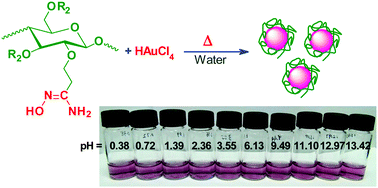 Functionalization of cellulose
Functionalization of cellulose
Cellulose is the most abundant renewable natural polymer material.The molecular chain is composed of β-1,4-linked anhydro-D-glucose units in which every unit is corkscrewed 180° with respect to its neighbors, and the repeat segment is frequently taken to be a dimer of glucose. Cellulose is highly crystalline and generally insoluble, due to the intramolecular hydrogen bond networks extending from the O(3’)-H hydroxyl to the O(5) ring oxygen of the next unit across the glycosidic linkage and from the O(2)-H hydroxyl to the O(6’) hydroxyl of the next residue. Researches of hydrogen bonding in cellulose can dissolve dissolutions, processes and applications of cellulose.
Cellulose graft copolymers
Cellulose graft copolymers with well-defined architectures synthesized by controlled/living radical polymerizations and their stimuli-induced assembly have been investigated extensively. The fabrication of functional materials with cellulosic blocks and their applications have a bright future.
Polymer, 2004, 45, 7091–7097; 2006,47:7927–7934, Cellulose, 2006, 13, 235–244,J. Polym. Sci. Polym. Chem., 2005, 43, 4099–4108; 2008, 46, 6907–6915, Macromol. Chem. Phys., 2008, 209,424–430.Carbohydr. Polym., 2011, 84, 195–202, Langmuir, 2010, 26, 8697–8703; 18519–18525,J. Phys. Chem. B, 2012, 116:55–62
Cellulose derivatives
There are three hydroxyl groups on each anhydroglucose unit of cellulose. The presence of these hydroxyl groups offers a range of opportunities for modification of cellulose to prepare cellulose derivatives with desired properties for specific applications in industry, coatings, pharmaceutics and domestic commodities.
The introduction of thiol groups to cellulosic backbones could be used for the fabrication of cellulosic functional materials that have biological environmental stimuli-responsive properties, which could be used as carriers for drug and gene delivery. Some pioneering work has been carried out by our group on the synthesis of thiolated hydroxypropylcellulose (HPC-SH) and the fabrication of dual-stimuli-sensitive nanogels therefrom. On heating a dilute solution of HPC-SH to a temperature above the lower critical solution temperature (LCST) of HPC, the HPC-SH will collapse to form a nanogel, which can be crosslinked by disulfide bonds formed by oxidation of thiol groups. The crosslinked nanogel shows both thermal and redox stimuli-responsive properties.
Polymer Chemistry, 2(3), 672-678
Amidoxime functionalized cellulose (AOFC) derivatives have been synthesized by a two step approach and characterized. Firstly, cyanoethyl cellulose (CEC) was synthesized by using Michael addition between acrylonitrile and hydroxyl groups of cellulose in the homogeneous cellulose/NaOH/urea solution. The nitrile groups of CEC were then converted into amidoxime groups using NH2OH. The new cellulose derivative AOFC can be used as both a reducing agent and stabilizer for preparing gold nanoparticles (AuNPs). The AOFC stabilized AuNPs have the excellent stability in whole pH range, which may have the promising applications in the fields of catalysis, biotechnology and medicine.
Polym. Chem., 2013, 4, 2556–2563


